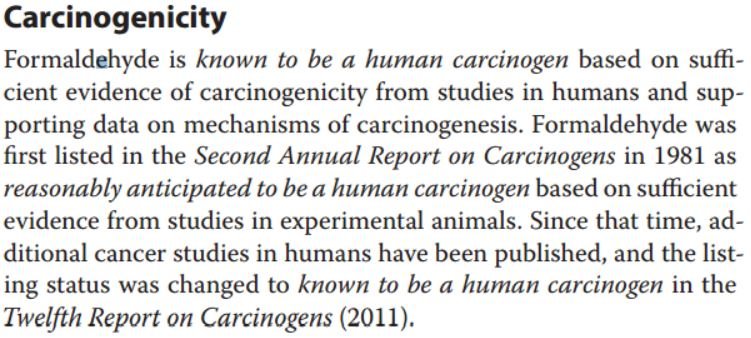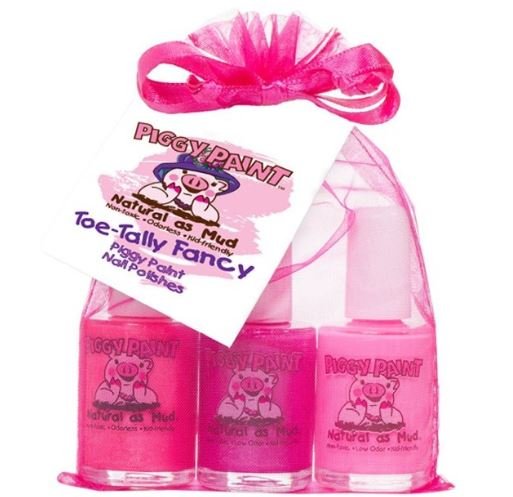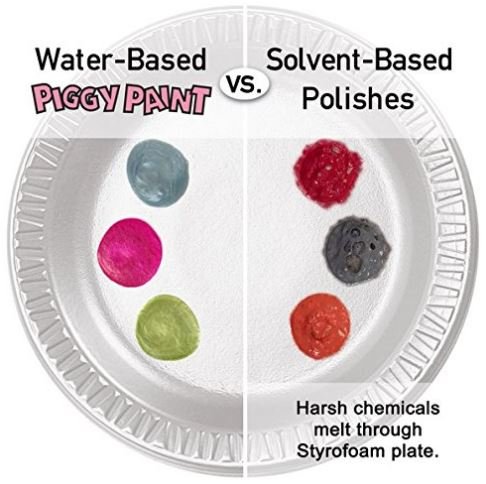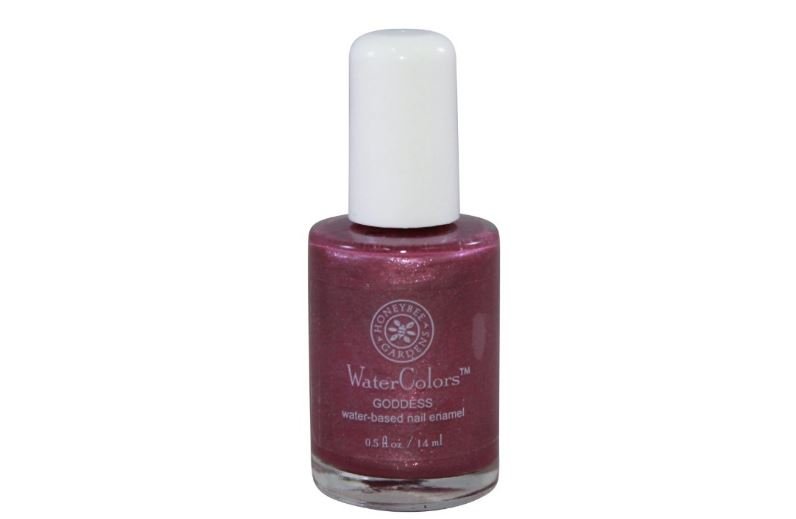Water-Based Nail Polish: Bye-Bye Despicable Chemicals
A fresh coat of nail polish can make your nails look stylish and refined, but most conventional formulas hide a much darker side. Many mainstream brands contain dozens of synthetic chemicals that act as solvents, plasticizers, resins, and preservatives. These ingredients are harsh on your body and harmful to the environment.
- Nail Polish Dangers: The Problems With Mainstream Nail Polish
- "Non-Toxic" Nail Polish Blunder
- Truly Safe Non-Toxic Nail Polish Alternatives: Water-Based Nail Polish
- Advantages of Water-Based Nail Polish
- Popular Water-Based Nail Polish Brands
- Water-Based Nail Polish FAQs
- What makes water-based nail polish less toxic?
- Does water-based nail polish last as long?
- Is the application different than regular polish?
- Does water-based nail polish limit color options?
- Are water-based polishes better for nails?
- Does water-based nail polish have a bad odor?
- Is water-based nail polish more expensive?
- Where can I buy safe water-based nail polish?
- Any tips for transitioning to water-based polish?
If you have ever opened a bottle and smelled the strong fumes, that is your warning sign. Traditional nail polish is essentially a mixture of volatile chemicals, and most people apply it without ever considering what they are exposing themselves to.
These fumes are not just unpleasant. They indicate the presence of ingredients that can be absorbed through your nails and skin every time you paint your nails. For years, many women have unknowingly exposed themselves to these chemicals in the name of beauty simply because the risks were never clearly explained.
Now that more information is available, there is no reason to settle for questionable products.
Water-based nail polish gives you a cleaner, safer alternative without the harsh fumes, strong solvents, or concerning ingredients found in traditional formulas.
Nail Polish Dangers: The Problems With Mainstream Nail Polish
Nail polish contains some very harmful chemicals and additives. The three most notorious chemicals found in nail polish are Formaldehyde, Dibutyl Phthalate (DBP), and Toluene. Over the years, these chemicals have really taken quite the beating in the media and on countless websites and blogs.
1: Formaldehyde –
Out of all the chemicals found in nail polish, this particular chemical is one that almost everyone has heard of before. As an intermediate in the combustion of methane, formaldehyde is “known to be a human carcinogen.”

The Department of Health and Human Services (DHHS) first released an updated carcinogenicity profile on formaldehyde in their 12th Report on Carcinogens (RoC) in 2011, affirming it as a definite human carcinogen.
Furthermore, formaldehyde has been linked to lung and nasal cancer. So, while this chemical might be excellent for embalming bodies, it’s really not something I’d prefer putting on my nails.
On a serious note, this chemical is hazardous, period. While this may offend, you are being irresponsible if you’re lackadaisically painting your nails (or anyone else’s) with nail polish that contains this chemical, which is known to cause cancer. If you aren’t sure whether of not your nail polish contains this ingredient, it’s likely that it does.
Don’t take any chances here; it’s already been proven that chemicals easily leach into the bloodstream when applied to the nails. Properly dispose of your dangerous nail polish and never use it again, especially since safer alternatives exist.
2: Dibutyl Phthalate (DBP) –
As a chemical that most are probably unfamiliar with, Dibutyl Phthalate is a synthetically manufactured chemical that’s useful for making plastics more flexible. This chemical does not occur naturally and is an oily and odorless substance. Furthermore, applications of this chemical include its use in carpet adhesives, insect repellants, glue, and rocket fuel.
I know we all want really stunning nails. But for goodness’ sake, I don’t want a rocket fuel additive in my nail polish, do you? I’d be far more comfortable with brittle-cracking nail polish all day long rather than being exposed to such a questionable chemical as this. It’s also said that DBP has neurotoxic effects.
Thankfully, this chemical has been banned in Europe. Dibutyl phthalate has also been classified by authoritative bodies as a “reproductive and developmental toxicant”. Worse yet, the Environmental Working Group (EWP) has given this chemical a hazard rating of 10, the highest possible danger level.
3: Toluene –
We all love nail polish that goes on smoothly, right? Well, that’s what this particular chemical is used for in nail polish. However, this chemical has also been banned in Europe for its adverse health effects.
So, what’s the problem with Toluene? As a chemical that’s used in gasoline as an octane booster, toluene is listed as a developmental hazard.
It’s said that it may harm an unborn child if exposure happens during pregnancy. Also, it’s been associated with low birth weight, birth size, hearing loss, and other learning disabilities. Refrain from using any nail polish that contains this terrible ingredient.
That’s not all…
As if the three previously mentioned chemicals weren’t reason enough to be extremely cautious regarding what you’re putting on your nails, keep in mind that there are plenty of other chemicals we didn’t mention. Perhaps you read a news story about triphenyl phosphate.
If you haven’t read about the above chemical, you also don’t know that findings from a study administered by Duke University revealed that all women participating in the study had a metabolite of the chemical in their bloodstream just 10-14 hours after painting their nails. The levels of diphenyl phosphate (a metabolized form of TPHP) increased by a factor of 7 in the test subjects.
Worse yet, as a chemical not part of the “big 3” dangerous chemicals we listed earlier, triphenyl phosphate is an endocrine disruptor that also causes reproductive and developmental problems. Though we’ve listed four toxic chemicals in nail polish, that’s just the tip of the iceberg.
The Scary Reality: You may be poisoning yourself with your nail polish.
“Non-Toxic” Nail Polish Blunder
That was all very depressing, and I’m sure you’ll want to take a deep breath in anticipation of happier things. But wait, before we move on to the good nail polish alternatives, we need to discuss one important detail about “non-toxic” nail polish.
A 2012 study by the California Department of Toxic Substances Control proved that companies claiming to be “toxic-free” were, in fact, quite toxic based on laboratory studies. Thus, while these companies claimed to be non-toxic, they added chemicals that they knew to be toxic.
In essence, they were claiming that they weren’t using toxic ingredients, that they, in fact, were using. This demonstrates the sad reality that many companies are perfectly willing to mislead consumers as long as they make acceptable profits.
Truly Safe Non-Toxic Nail Polish Alternatives: Water-Based Nail Polish
This growing concern about the toxicity of nail polish has pushed manufacturers to come up with water-based nail polish solutions that do not contain the slew of toxic ingredients we mentioned earlier. This new, non-toxic trend in the nail polish industry is a refreshing reminder that if consumers have the right information, they will cause the market to shift in the right direction.
While not all the companies were honest about their “non-toxic” claims, there are some valid companies that make truly non-toxic nail polish products. The most non-toxic nail polish solutions are water-based as opposed to solvent-based.
Since these alternatives are water-based, water evaporates into the air during drying instead of volatile fumes from solvents (like in regular nail polish).
Generally, water-based nail polish comprises ingredients like acrylics, colorants, and water. How refreshing. I remember using acrylic paint in my 5th-grade art class.
Advantages of Water-Based Nail Polish
Water-based nail polish has many advantages, aside from being completely free from toxins. Water-based nail polish is quick-drying, durable, and available in many long-lasting colors. It doesn’t stain the fingernails, dry them out, and usually lasts about a week.
It should be noted that this stuff won’t perform quite as well as the toxic and solvent-based varieties we discussed earlier. But it also won’t poison you. The lack of performance should be expected, considering that solvent-based nail polishes have rocket fuel additives. It can’t get much more well-performing and toxic than that.
Water-based nail polish is removed without acetone, another chemical harmful to the environment and health. While many water-based nail polish solutions aren’t quite as durable as their toxic alternatives, their durability is quite impressive for what they are.
While you may need to paint your nails more often, at least you won’t be feeding your body chemicals it never wanted in the first place.
Popular Water-Based Nail Polish Brands
The growing popularity of water-based nail polish has threatened traditional chemical-based brands. Water-based nail polish is far safer and affordable, with prices ranging from seven to fourteen dollars per bottle. The following options are just two water-based nail polish brands that you can choose from.
Piggy Paint Water-Based Nail Polish

Piggy Paint was originally released as a fun, non-toxic, and eco-friendly nail polish for kids. Today, it’s a solid, non-toxic, and cruelty-free nail polish choice for health-conscious grown-ups, too. Better yet, they now have an entire adult line of nail polish called SOPHi.
Also, the durability and performance of this naturally non-toxic nail polish can be greatly improved by using their base coat + sealer product. Piggy paint is free of formaldehyde, toluene, phthalates (DBT), ethyl acetate, acetone, Bisphenol A, and many other harmful chemicals found in normal nail polish.
Ingredients –

Its main ingredients include water, copolymer, acrylates, and neem oil. It also contains colorants, depending on the shade: Red 34 Lake, iron oxide, mica, ultramarines, titanium dioxide, red 28, violet 2, copper flake, and others. Remember, none of the harmful and harsh ingredients found in normal nail polish will be found in Piggy Paint. With all these non-toxic ingredients, it’s as natural as mud!
Application –
To apply Piggy Paint, first wash your hands with soap and water. Dry them before applying 2-3 thin coats of nail polish. In between coats, you can blow-dry polished nails on warm heat (low setting) until dry. While not necessary, blow-drying with warm heat will harden the nail polish more efficiently for maximum protection against chipping. Also, as we mentioned before, using the basecoat + sealer will provide superior results.
Advantages and Disadvantages –
The great thing about Piggy Paint is that it usually lasts up to a week or more without chipping. However, just remember that your results will be best if you use the recommended application practices.
Applying safe nail polish can also be a great bonding activity for mother and daughter, except that with Piggy Paint, you won’t have to worry about toxic chemicals. The only disadvantage of Piggy Paint is that it likely won’t be quite as durable as traditional toxic nail polish.
Piggy Paint can also be a fun learning tool for kids. Developmentally, painting nails will improve your daughters’ fine motor skills and allow them to express creativity while becoming familiar with different colors.
All of this being said, just remember that it’s always a good idea to help your kids paint their nails and never leave them unattended. If you do, you may return to a room of new and interesting impressionistic art on your bedroom walls.
Honeybee Gardens Nail Polish

For those who are looking for a solvent-free and safe nail polish alternative, Honeybee Gardens is another great solution for you. Like Piggy Paint, Honeybee Gardens doesn’t make use of harmful chemicals and irritating fumes. Its ingredients are water, acrylates, and non-ionic soaps, and may contain iron oxide, mica, titanium dioxide, and ultramarine blue.
It comes in many different colors, which look great. But again, durability will largely depend on how you apply this nail polish.
Application –
Honeybee Gardens becomes tack-free in about 15 minutes, just as quickly as regular nail polish. However, it requires substantial additional drying time. The trick is to apply two thin coats instead of one thick coat because they dry up quickly. Natural factors such as humidity and temperature can also affect drying time.
Honeybee Gardens states that 75% hardness will generally occur after 1 hour. Moreover, 100% hardness will occur after roughly 4-6 hours of drying time. Therefore, care needs to be taken in the hours following nail polish application. For best results, apply Honeybee Gardens nail polish at night so that it will harden properly.
Honeybee Gardens Nail Polish Removal –

Removing this water-based nail polish can be tedious at times since the nail polish bond will strengthen over time. So, it’s recommended that the nail polish is removed at or just after a week of wear. The nail polish can be effectively removed with the Honeybee Gardens felt pad and Honeybee nail polish remover. It can also be removed with alcohol.
For removal, hold the wet felt pad (or cotton ball) on the nail for a few seconds. Then, with gentle pressure, wipe off the nail polish. It may take a few swipes before the nail polish is completely removed, but remain patient during this process. Depending on various factors, it may take longer or shorter to remove. Just keep rubbing gently, and the nail polish will come off.
After removal, wash your hands with soap and water. You should also know that acetone-based nail polish remover won’t work because Honeybee Gardens is not a solvent-based formula.
Advantages and Disadvantages –
Honeybee Gardens water-based nail polish ensures a safe and quality nail polish. It’s made of natural ingredients and doesn’t make use of harmful substances. It’s also water-based and without any of the offensive odors of solvent-based nail polish.
It’s safe for adults and kids and can be easily removed with a bit of patience. However, Honeybee Gardens nail polish will likely chip off or scratch easily if a longer curing time is not given. Also, people with dry, porous, or ridged nails may have a more difficult time removing this nail polish.
There are many brands of water-based nail polish that you can choose from. Healthy beauty experts always suggest opting for non-toxic nail polish alternatives instead of their solvent-based evil twins. The toxicity of traditional nail polish isn’t worth it for you or your family.
Do you want to check your current nail polish brands for toxicity? Check out EWG’s Skin Deep Cosmetic Database
Water-Based Nail Polish FAQs
What makes water-based nail polish less toxic?
Water-based formulas avoid the harsh solvents and plasticizers found in traditional polish. They typically exclude chemicals such as formaldehyde, toluene, camphor, xylene, and dibutyl phthalate. Because the base is water rather than industrial-grade solvents, the overall exposure to volatile compounds is dramatically reduced.
Does water-based nail polish last as long?
Water-based formulas used to chip quickly, but modern versions are much more durable. Many brands now last 5 to 10 days with proper prep and sealing. Longevity improves when you lightly buff the nail, use a compatible base coat, and finish with a water-based top coat.
Is the application different than regular polish?
The application is almost identical, but there are a few helpful tips:
- Apply in thin layers to avoid streaking
- Allow each coat to dry fully before adding another
- Use warm airflow during or after application to speed the curing process
Once dry, the finish behaves the same as standard polish.
Does water-based nail polish limit color options?
Not at all. Water-based lines now offer nearly every type of finish:
- Matte
- Glossy
- Sheer
- Opaque
- Glitter
- Metallic
- Pearl
You do not have to sacrifice color payoff or variety to avoid harsh ingredients.
Are water-based polishes better for nails?
Yes. Since there are fewer aggressive chemicals, water-based polishes are gentler on the nail plate and surrounding skin. They help prevent common problems caused by solvent-based formulas, including brittleness, peeling, and residue buildup. They are also an excellent choice for people who polish frequently or have sensitive skin.
Does water-based nail polish have a bad odor?
No. Water-based polishes usually have little to no noticeable smell. They do not release the strong fumes associated with traditional nail polish, so they are a better option for anyone sensitive to odors, including pregnant women and children.
Is water-based nail polish more expensive?
Pricing is surprisingly similar. Most reputable water-based brands fall between 6 and 18 dollars, depending on the bottle size and formula. Some boutique or specialty brands may cost more, but plenty of budget-friendly options are available.
Where can I buy safe water-based nail polish?
You can find water-based polishes at natural beauty shops, online retailers, and even big-box stores. Popular brands include:
- Honeybee Gardens
- Zoya
- Suncoat
- Piggy Paint
- Acquarella
- Klee Kids
These brands are well-established and known for cleaner, safer formulations.
Any tips for transitioning to water-based polish?
A smooth transition is easy with a few simple adjustments:
- Use a base coat designed specifically for water-based products
- Try different brands to see which formula works best with your nail type
- Seal the polish with a matching water-based top coat
- Avoid soaking hands in water immediately after polishing
- Give the polish a few hours to fully cure for maximum durability
Over time, most people find that water-based polish becomes their preferred option because of its safety, comfort, and ease of use.


